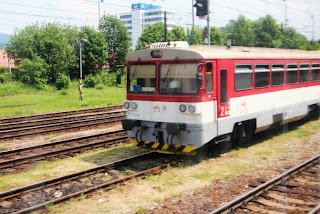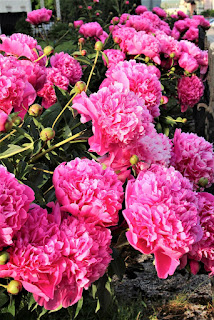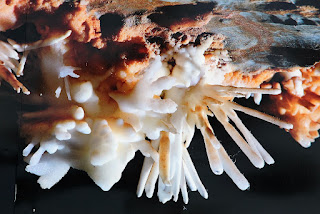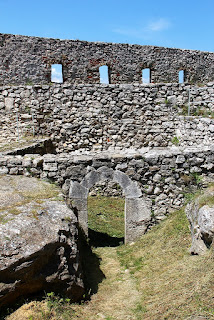Go outdoor in Slovakia in 2015
Part 1/2
(Travel Story Series @ Hon Too Fang 2021)
Preface
In June 2015 we joined 17 others for a 23-day group tour to Central Europe, setting foot on Austria, Slovakia, Poland and the Czech Republic. The travel story is told in 4 parts. Each of the country would have its story.
Hope you could take the tour with us. It is free. No hidden cost. No advertisement. This story is on Slovakia. This one is – go outdoor, like hiking in the Tatra Mountains.
Hon
(28-01-2016)
Slovakia
Slovakia is also a landlocked country, 49,000 sq km in area (2.4 times the size of our Perak state) with some 5.4 million people. In ethnicity, 81% Slovaks, 9% Hungarians. The national language is Slovak, a form of Slavic language. In religion, current estimate says Catholics 62%, Protestants 9%, “no-religion” 13% and “not-to-reveal” 11%. The capital is Bratislava with 500,000 people.
In economy Slovakia is a high-income country, with 90% of her citizens owning a home. The income disparity is quite high though. People is the eastern part earn less than a third of those from the capital region of Bratislava. Main GDP sector is services and the major industries are automobile and electrical engineering. Since 2007 it is the World’s largest producer of car per capita. The main brands are Volkswagon, Peugeot, Kia and Land Rover.
We visited Bratislava the capital, cities like Poprad and Levoca at the foot of the Tatra Mountains. As shown in the map, the Tatra Mountains is located in the north of the country. The mountain itself extends into Poland.
Bratislava
Bratislava is located along the regional trade route during the medieval time. It is the capital and main city of the nation and currently the transport hub of the region. As in all European cities, the Old Town, the Main Square and historic churches are the key tourist attractions.
Old Town
The Main Square, 1st photo, was founded around 1599 and held different names over the years, like Adolf Hitler Square during WW2 and 4 April Square during the communist era. Shown some street scenes. The landscape is dominated by the Old Town Hall, 5th photo, which now houses the Bratislava Museum and the Maximillian (or Roland) Fountain, last photo, built in 1572 with a statue of the Hungarian king Maximillian II on top of the 10.5 m column.
Statues
On the lighter side there are a few amusing life-size bronze statues here. The most photographed is Cumi or The Watcher who poked his head out from a round manhole. Ladies, beware, don’t go near him if you are wearing skirts. Next is Schone Naci waving to passing ladies. Legend says that this Naci was a real person, went mad after his girl left him, and started giving flowers to women randomly on the street. Lastly there is the standing Napoleon's Army Soldier, with folded arm and typical Napoleon hat.
Michael’s Gate
Nearby is Michael’s Gate, the only gate remaining from medieval times, topped with a statue of the archangel Michael. Right below the gate is the bronze “Zero Kilometer Marker” marking the city center and showing distances to 29 cities in the World.
Street scenes in adjacent areas
Shown more street scenes in adjacent areas. The 4th photo shows the communist era sculpture of the Worker and Kolkhoz Woman.
The notable building shown here is the Slovak National Theatre or Old Opera House, completed in 1886, with the Ganymede Fountain right in front of it.
And two contrasting scenes: a couple in love and two fellows at war.
St Martin Cathedral
The main Catholic church of the city is the St Martin Cathedral, completed in 1452. It served as the coronation church of the Hungarian kings between 1586 and 1830. The
85 m spire dominates the skyline of the Old Town. It has high ceilings and tall panels of stained glasses. Show 2 of the beautifully crafted altar pieces.
Next to the cathedral is an unusual monument to commemorate an old synagogue after it was demolished in 1968 to make way for the approach of the new bridge.
The Blue Church
Then the refreshing Church of St Elisabeth or the Blue Church, completed in 1908. A small church in the Hungarian Art Nouveau style. It is the most sought after venue for weddings.
Poprad
Poprad is a town in northern Slovakia at the foot of the Tatra Mountains, famous for its picturesque historic centre and as a holiday resort. Population 55,000. About 340 km north-east of Bratislava. Our train journey took about 4 hours. Shown scenes of the journey.
Spišská Sobota
We stayed at the district called Spišská Sobota, itself an old town dated to the medieval times. Population 3,000. The small town centre consists of a few rows of narrow old buildings with tall shingled roofs, now serving as hostels and cafes, etc. A most delightful place. The last photo shows the hostel we stayed, Pension Sv Juraj, said to be 700 years old and last renovated in 1996. “Sv Juraj” is St George in the Slovakia language.
And a few more shots of the beautiful setting of the buildings and the neighbourhood.
The landmark in the town center is the Church of St George, founded in 1273 and rebuilt in 1464 in the Gothic style. Only a chapel from the original construction is preserved, 2nd photo, while other interior parts are “modern” additions. Shown one of the 5 altar pieces, 3rd photo, featuring St George while the last photo shows a rather unusual decoration. Not sure who is this sad face represents.
In the garden of the church the peony is in bloom. Bigger flowers than the famous ones in Luoyang (洛阳), China.
Dobšinská Ice Cave
The cave is some 30 km south of Poprad, and is one within a group of ice caves in Slovakia recognised as a UNESCO World Heritage site. The cave floor descends downwards from the entrance which faces north, meaning the cave is rapidly cooled during winter from the cold air from the north. Year round temperature is near zero degree.
At the time of our visit the outside temperature was in the low 20s. The total length of the cave is near to 1.5 km, about a third open to the public. The 1st photo shows the access into the main hall. Others show the ice formation in many forms.
Spis Castle
The castle, 40 km east of Poprad, is one of the largest in Europe, over 41,000 sq m in area. One within the group of 3 castles in Slovakia recognised as a UNESCO World Heritage site. It was first built in the 12th century, as a county in the Hungary Empire. It was rebuilt and expanded 3 centuries later. It served as a private residence in the later years. Was abandoned in the early 18th century as the owner considered the residence less than comfortable. Was burned down in 1780, cause unknown. One theory said the owner burned it down to avoid paying massive property tax like our “cukai pintu”.
Partly reconstructed in the late 20th century and now came under the administration of the national museum system. Shown some external views. See the tourist on top of the tower in the last photo.
Kept at the display room are historical artefacts like an armour set for a soldier, and a giant wood carving depicting barbers at work. A few of the internal chambers have been re-furbished, like a chapel and the kitchen area.
And lastly, a shot for memory and the view of the walled area and the surrounding meadow seen from the castle.
To be continued ……




































































No comments:
Post a Comment